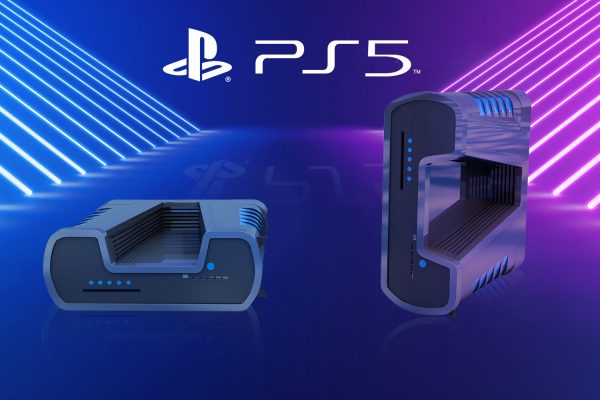You may have expected it or it may come as a bolt from the blue, but it’s now completely official: Sony has announced its new console. It is, as you might expect, called the PlayStation 5, in continuance with a naming scheme Sony has been using since 2000’s PlayStation 2. It’ll come to our shores in the holiday period next year, although we don’t actually know exactly when it’s coming yet. Naturally, we’ll bring you more on the PS5 as we get it, but for now, here’s the scoop.
Speaking to Wired, lead architect Mark Cerny, as well as Sony Interactive Entertainment CEO Jim Ryan, revealed some more exclusive details about what we can expect from the PlayStation 5. You can also read a truncated version of this info on the official PlayStation blog. In some ways, what we know now isn’t too much more than what we knew back in April, but in other ways we’ve got a whole lot more on the PS5 than we had. Some unknowns remain, but Sony’s new console is shaping up to be a real killer in its field.
As we already know, the PlayStation 5 will use custom AMD architecture for its processor, and a custom Ryzen chip for its graphics. Back in April, Cerny spoke to Wired about the console’s ray-tracing capabilities, and in the new interview he’s clarified that this ray-tracing will be something the console’s graphics hardware handles itself; no software solutions will be used to supply ray tracing to the PlayStation 5. That’ll come as a relief to hardware hopefuls.
If you missed the boat on ray tracing, here’s a quick primer: ray tracing is effectively a technology that uses rays of light to trace objects in real-time using sources of light. Initially, game developers were using this technology to render light sources and realistic shadows, but then it was realised that the tech could also be used for nerdier stuff like ambient occlusion. In short, it’ll make your games look more realistic and more impressive, and the PS5 has it (as does Xbox Scarlett).
The big new feature talked up in Cerny and Ryan’s Wired interview is the new DualShock 5 (it doesn’t have a name yet, but we think this is a safe bet) and its haptic feedback. There are two new major hardware additions in the grips of the DualShock 5, both of which are intended to provide more realistic and impressive haptic feedback. The DualShock 4 currently doesn’t have this feature; it rumbles, but that’s about all it can do.
Haptic feedback means that when your character in a game interacts with a surface, the controller will, in theory, reflect how that surface would actually feel. Ice, for example, will feel slippery; you’ll feel every pull of water resistance and air resistance; and you’ll know how it feels to wade knee-deep through mud. That’s all thanks to the two new feedback motors. This will replace the standard rumble tech in current controllers.
In addition to the haptic stuff, the DualShock 5 will also have new adaptive triggers which are designed to provide 1:1 feedback on what you’re doing in game. For example, firing a machine gun will feel different to firing a single shot from a pistol; drawing back a string on a bow will feel tense and taut; and throwing grenades will feel different to throwing blades. This is stuff Xbox One has done for a while, but PlayStation 5 is promising to do it better.
Cerny and Ryan also went into more detail about the PS5’s new SSD with Wired. Essentially, the SSD will load data in bespoke blocks rather than loading it all, which means you’ll be able to select which parts of a game you want to install rather than block-installing the whole thing. You could, for example, only install the multiplayer component of a game like Call of Duty or Battlefield, while leaving the single-player for another time.
The SSD will also make draw distances, loading times, and other in-game features more convenient. That’s basically because the new drive has a significantly higher raw speed than a traditional spinning drive, so it doesn’t need to check data with the disk as often. In practice, what game developers do with this will differ, but expect larger game worlds, more detail, and shorter loading times in general. We’re pretty excited for this.
The PlayStation 5 will definitely feature a physical media drive. It’ll read 100 GB-capacity optical discs through a Blu-ray drive that will also double as a 4K Blu-ray player. That’s big news; the PlayStation 4 Pro can’t play 4K Blu-ray discs, although it does support 4K content from Netflix and the like. This brings the PS5 in line with the Xbox One X, which supports 4K Blu-rays. It’s not a format that’s proving massively popular right now, but the support is nice.
There’s still the matter of cost to consider, and naturally Cerny and Jim Ryan are staying fairly tight-lipped about how much the PlayStation 5 will cost consumers to buy. Some surveys suggest that cost is the most important factor for consumers, so Sony will want to make sure the console has mass-market appeal. For the meantime, though, we’re excited about the new possibilities Sony’s new hardware will bring to the table. Roll on insta-loading open-world games!


